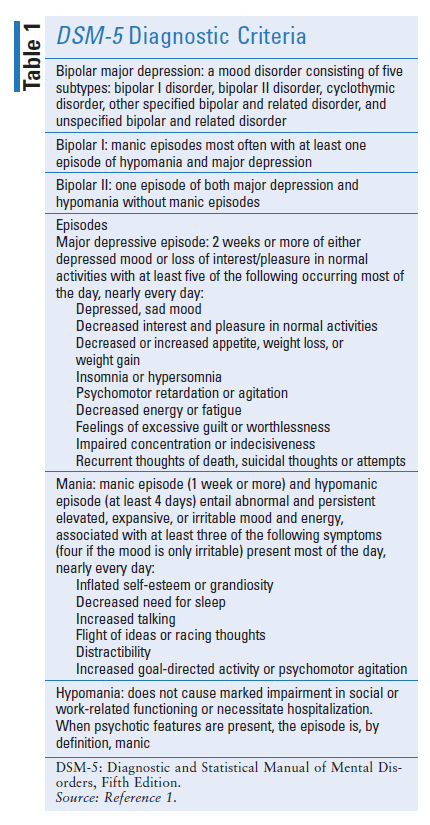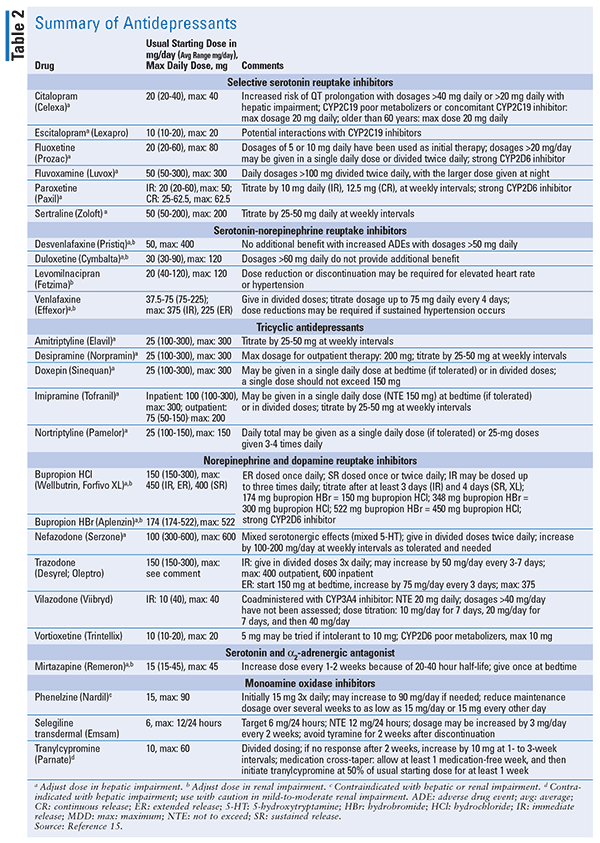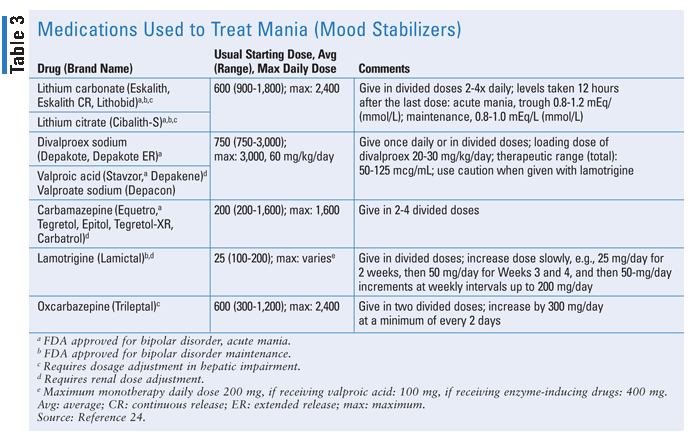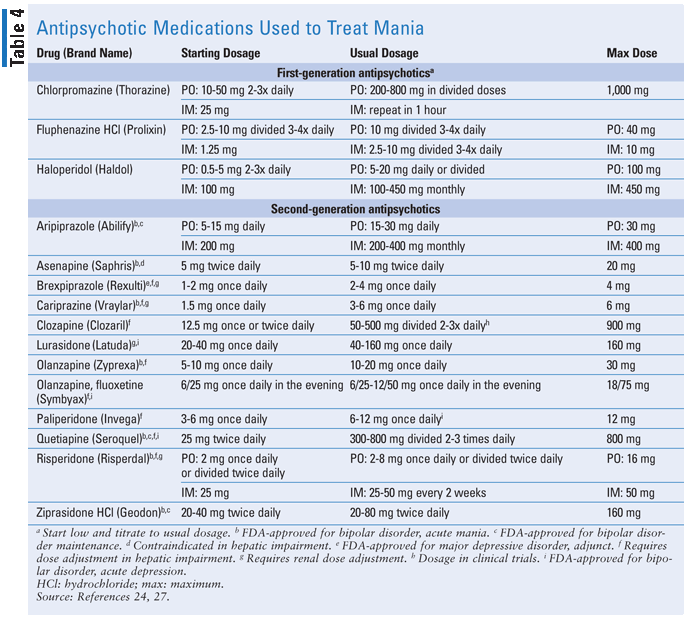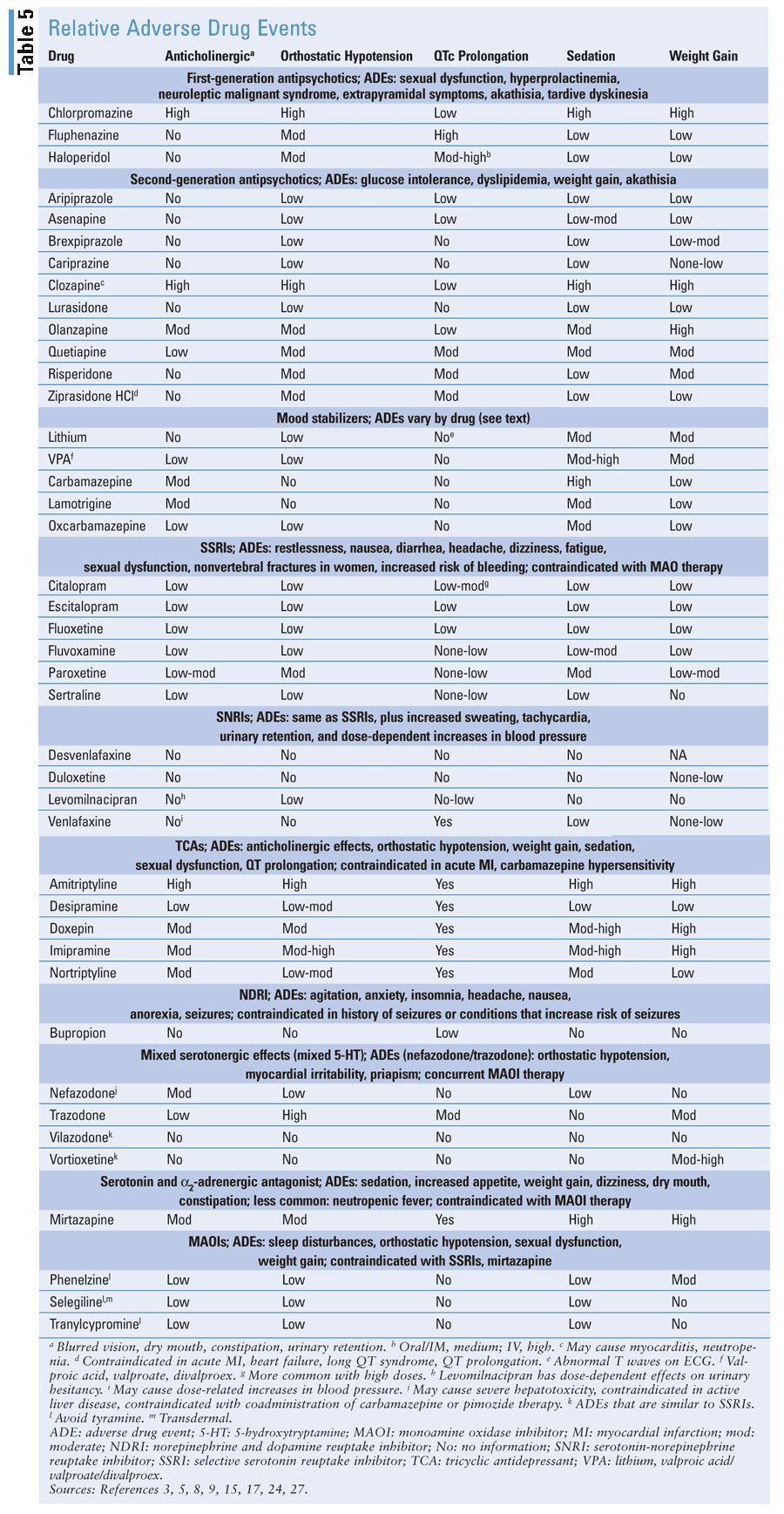Managing Major Depression and Bipolar Disorder
RELEASE DATE:
August 1, 2018
EXPIRATION DATE:
August 31, 2020
FACULTY:
Micheline A. Goldwire, PharmD, MS, BCPS
Associate Professor and Director, Drug Information Services
Regis University School of Pharmacy
Denver, Colorado
FACULTY DISCLOSURE STATEMENTS:
Dr. Goldwire has no actual or potential conflicts of interest in relation to this activity.
Postgraduate Healthcare Education, LLC does not view the existence of relationships as an implication of bias or that the value of the material is decreased. The content of the activity was planned to be balanced, objective, and scientifically rigorous. Occasionally, authors may express opinions that represent their own viewpoint. Conclusions drawn by participants should be derived from objective analysis of scientific data.
ACCREDITATION STATEMENT:
Pharmacy
 Postgraduate Healthcare Education, LLC is accredited by the Accreditation Council for Pharmacy Education as a provider of continuing pharmacy education.
Postgraduate Healthcare Education, LLC is accredited by the Accreditation Council for Pharmacy Education as a provider of continuing pharmacy education.
UAN: 0430-0000-18-038-H01-P
Credits: 2.0 hours (0.20 ceu)
Type of Activity: Knowledge
TARGET AUDIENCE:
This accredited activity is targeted to pharmacists. Estimated time to complete this activity is 120 minutes.
Exam processing and other inquiries to:
CE Customer Service: (800) 825-4696 or cecustomerservice@powerpak.com
DISCLAIMER:
Participants have an implied responsibility to use the newly acquired information to enhance patient outcomes and their own professional development. The information presented in this activity is not meant to serve as a guideline for patient management. Any procedures, medications, or other courses of diagnosis or treatment discussed or suggested in this activity should not be used by clinicians without evaluation of their patients' conditions and possible contraindications or dangers in use, review of any applicable manufacturer's product information, and comparison with recommendations of other authorities.
GOAL:
To provide pharmacists with an overview of drugs for the treatment of major depression and bipolar disorder (BPD) I and II.
OBJECTIVES:
After completing this activity, the participant should be able to:
- Distinguish between major depression and BPD I (BPD-I) and II (BPD-II).
- Describe the differences between a manic and a depressive state.
- Identify optimal pharmacotherapy for treatment of major depression, BPD-I, and BPD-II.
- Evaluate adverse drug events associated with drugs used to treat major depression, BPD-I, and BPD-II.
ABSTRACT: Major depression and bipolar disorder are distinct psychiatric disorders that often require long-term drug therapy to stabilize the patient's mental well-being, and distinguishing between these mental disorders is key to successful treatment. Drugs used to treat these conditions include antidepressants, antipsychotics, and mood stabilizers. First-line pharmacotherapies vary according to guidelines. Choice is often based on the adverse drug event profile of the selected agent, and providing the patient with the best possible methods to remain adherent safeguards against therapy failure.
CLASSIFICATION
Major Depression
The Diagnostic and Statistical Manual of Mental Disorders, Fifth Edition (DSM-5), defines major depressive disorder (MDD) as one or more depressive episodes without symptoms of mania or hypomania.1 Characterized by at least 2 weeks of definitive change in affect and cognition (TABLE 1), depressive episodes impact quality of life and activities of daily living. Major depression is the ninth leading cause of disability among all diseases and injuries in the United States.2 A diagnosis of major depression is generally given after at least two episodes have occurred.
To aid in the diagnosis of MDD, various clinician-administered depression rating scales are available. Examples include the nine-item Patient Health Questionnaire (PHQ-9), the 17-item Hamilton Depression Rating Scale (HAM-D), the 15-item Mood Disorder Questionnaire, and the 21-item Beck Depression Inventory.3 The PHQ-2 screens for possible depression with two questions about having little interest in activities and feeling down or hopeless. Considering activities and feelings over the past 2 weeks, the patient scores the answers to the two questions as 0 (not at all) to 3 (nearly every day). A score of 3 or higher indicates possible depression, and the patient should be assessed further.
Bipolar Disorder
Bipolar disorder (BPD) is a disabling, episodic, recurrent mood disorder classified as bipolar I (BPD-I) or II (BPD-II) depending upon the extent of manic symptoms (TABLE 1).1,4 BPD-I (with mania) represents the classic manic-depressive disorder in that patients experience manic episodes typically with one or more depressive episodes, although a depressive episode is not necessary for diagnosis.1,5 BPD-II (with hypomania) requires at least one episode of both major depression and hypomania without manic episodes.1,5 BPDII should not be thought of as a milder form of BPD-I, because patients often experience disruption of work and social function.1 The prevalence of BPD-I is similar in men and women, but BPD-II occurs more commonly in women.5,6
Hypomanic and manic episodes consists of the same symptoms (TABLE 1); however, severity and duration of symptoms differ. The hypomanic episode is not severe enough to cause marked impairment in social or work-related functioning or to necessitate hospitalization, whereas the manic episode may cause serious, marked impairment in social or work activities or may require hospitalization to prevent selfharm or harm to others.1,5 Mania may also present with psychotic features, e.g., delusions or hallucinations. If there are psychotic features, the episode is, by definition, manic. Hypomanic episodes last at least 4 days, while manic episodes last for 1 week or more.
Depressive episodes commonly occur in patients with BPD, although approximately 5% of persons with BPD-I have only manic episodes (unipolar mania).5,7-9 In one study, the median duration of a major depressive episode in BPD-I was 14 weeks, with over 70% of patients recovering within 12 months.10 The depressive episodes are similar to those that occur in MDD. Manic episodes occur roughly 9% to 10% of the time in patients with BPD.5
TREATMENT
Major Depression
The goal of initial treatment for depression is to alleviate symptoms and restore baseline function, which is defined by achieving response (>50% reduction in baseline clinician-administered rating scale score) and remission (>2 months with no or only a few symptoms, HAM-D score <8, PHQ-9 score <5).3,11,12 In addition, major depression is highly recurrent. Results from one study estimated a recurrence rate from the first episode of 40% over the first 2 years and 75% over the next 5 years.13 Pharmacotherapy is warranted for moderate-to-severe disease, which may be defined as more than the minimum number of symptoms (TABLE 1) and moderate-to-severe functional impairment.14
For safety reasons, newer antidepressants, i.e., selective serotonin reuptake inhibitors (SSRIs), serotoninnorepinephrine reuptake inhibitors, bupropion, and mirtazapine, are preferred over older ones, i.e., tricyclic antidepressants (TCAs) and monoamine oxidase inhibitors.15 SSRIs are a reasonable first-line choice; otherwise, therapy should be based upon adverse drug events (ADEs), comorbidities, concurrent medications, patient preference, patient response to prior therapy, and cost.
An improvement in symptoms should occur in the first couple of weeks, but it may take 4 to 10 weeks to see a substantial benefit.3,15 After an initial 4 to 6 weeks, patients should be assessed for partial response (20%-50% reduction in baseline clinician-administered rating scale score) or no response.3 If symptoms do not improve or if the patient has a partial response after the initial 4 to 6 weeks, ensure that the antidepressant is dosed at the optimal recommended target dose (TABLE 2) and verify patient adherence to the current regimen. The recommended dose may take longer to achieve in patients who require slower dose increases, such as the elderly. If the antidepressant is dosed at the optimal dose and symptoms persist or side effects become intolerable, it is recommended that the patient be switched to a different medication within the same class or a different class of antidepressants be considered.3,16 After successful acute treatment, continuation therapy is recommended for 4 to 9 months or at least 6 months after remission.11
When changing drugs within the same class, an immediate change may be made using the usual therapeutic dose of each agent (TABLE 2).3 If the new medication is in a different class, one possible dosing strategy is to use cross-tapering, in which, during the first week, half the dose of the first antidepressant is used at the same time as half the usual dose of the second antidepressant.3,17 After 1 week, the first antidepressant is discontinued and the second antidepressant is increased to the usual therapeutic dose. The patient should be reassessed after an initial trial of 4 to 6 weeks and the strategies noted above, e.g., switching medications, should be considered based on the patient's response to therapy. The prescriber's clinical judgment and experience, along with patient preference of therapy, help ensure successful treatment.
Bipolar Disorder
Treatment goals for BPD include rapidly controlling acute mania, hypomania, or acute depression. Patient safety and presenting symptoms determine therapy during an acute episode. Suicidal or psychotic symptoms may require hospitalization to prevent the patient from harming himor herself or others. Treatment of depressive episodes is important to prevent long-term effects, such as suicide.9 Risk of suicide increases during depressive episodes, with one-third to one-half of patients with BPD attempting suicide; roughly 15% to 20% of suicide attempts are lethal.5 Although a risk factor for suicide attempts is female sex, a risk factor for suicide completion is male sex.5,18 Compared to a euthymic state (defined as a relatively stable mood state), attempted suicides were 120-fold higher during mania/hypomania bipolar episodes and 60-fold higher with major depressive episodes.19 Management of BPD involves both acute and maintenance therapy. If the patient has been successfully treated in the past for BPD, those past effective medications may be tried first.17
Manic/Hypomanic Episodes
The goal of treating acute mania and hypomania is to rapidly stabilize the patient's mood and allow for a return to the patient's normal functioning for that patient. The mainstay of therapy includes mood stabilizers (lithium, valproic acid/valproate/divalproex [collectively referred to as VPA], carbamazepine) and antipsychotic medications.5,20 First-line options generally include lithium, VPA, or second-generation antipsychotics (SGAs).6,9,17,21 When mania symptoms are severe or endanger the patient or others, hospitalization may be required. Initial therapy often includes the use of an antipsychotic, benzodiazepine, mood stabilizer, or combination of any of these agents to provide symptom relief.6,9,17 In such cases, injectable medications are preferred, and a response to therapy is seen within 24 to 48 hours.
When a patient who is already taking an antidepressant develops hypomania or mania, the antidepressant should be discontinued.9,17,22 Patients with underlying BPD who present with what may initially appear to be unipolar MDD may be prescribed an antidepressant if an appropriate medical history is not obtained. Antidepressants may exacerbate mania symptoms and unmask a bipolar disorder. Approximately 10% of patients prescribed antidepressants for depression or anxiety have unrecognized BPD.18 Antidepressants should be used in patients with BPD only if combined with a mood-stabilizing drug or SGA.
Although guideline recommendations for pharmacotherapy used for mania differ, options for both monotherapy and combination therapy are recommended for the first episode. Monotherapy with haloperidol, olanzapine, risperidone, and quetiapine is particularly effective in short-term reduction of symptoms in patients who are not currently receiving pharmacotherapy for BPD.6,9 Other first-line options for monotherapy include asenapine, aripiprazole, paliperidone (doses >6 mg), risperidone, and cariprazine.17 The addition of quetiapine, aripiprazole, risperidone, or asenapine to lithium or VPA offers greater efficacy compared with lithium or VPA monotherapy.17 Whether to initiate monotherapy or combination therapy depends on severity of symptoms and tolerability (TABLE 3). Lamotrigine and combination therapy with paliperidone or ziprasidone plus lithium or VPA are not recommended for treatment of mania or hypomania.9,17
For patients receiving long-term therapy for BPD who present with acute mania or hypomania, increasing the doses of current medications to optimize therapy may be sufficient to control acute symptoms, assuming the patient is adherent.6 If the patient cannot tolerate the increased dose, consider prescribing a different antipsychotic (TABLE 4) and/or adding lithium if the patient is not already receiving lithium.6,9 Some response is expected within 1 to 2 weeks.5,17 If no response is observed within 2 weeks, ensure that the optimal dose has been prescribed and the patient is adherent before changing therapy to a different first-line agent.9,17
All patients with BPD require maintenance therapy, which generally consists of a mood stabilizer and/or SGA. After the acute episode resolves, adjunctive therapy, e.g., benzodiazepines, should be tapered and discontinued.6,9 Compared with mood stabilizer monotherapy, the combination of a mood stabilizer and an antipsychotic may be beneficial, providing better efficacy, but with greater ADEs.5,17 However, some clinicians recommend adding an antipsychotic to a mood stabilizer only for patients with psychotic symptoms.20 Medications with the strongest evidence for preventing subsequent manic episodes include monotherapy with quetiapine, lithium, VPA, olanzapine, or risperidone, and combination therapy with fluoxetine plus olanzapine, quetiapine or risperidone added to lithium or VPA, or olanzapine (without fluoxetine) or lamotrigine added to lithium.3,9,17 Monotherapy may be preferred to enhance adherence and minimize side effects. If the patient will not take oral medications, intramuscular administration should be considered.9,17
Depressive Episodes
Medications for the treatment of an acute episode of depression include antidepressants (combined with a mood stabilizer), SGA, lamotrigine, lurasidone, and lithium.9 First-line agents include monotherapy with quetiapine, lithium, lamotrigine, or lurasidone and combination therapy with fluoxetine plus olanzapine, or in patients receiving lithium, the addition of lurasidone, lamotrigine, or quetiapine.6,17 A reasonable choice for patients with no prior pharmacotherapy for depression includes quetiapine monotherapy or fluoxetine plus olanzapine.9,17 Other therapies that provide greater benefit over placebo include VPA monotherapy and SSRIs or bupropion plus lithium, VPA, or SGA.6,9,17 Patients presenting with acute agitation may require antipsychotics or benzodiazepines.
Options for maintenance treatment include continuing the same medication given for acute symptoms if effective, or switching to lithium, if not on lithium or VPA. First-line pharmacotherapy includes monotherapy with lithium, quetiapine, VPA, or lamotrigine and combination therapy with lithium or VPA plus quetiapine or aripiprazole.17 Other options include olanzapine (with or without fluoxetine) or lamotrigine added to lithium.3,9 A response should be seen within the first 2 weeks.17 If no response is noted, ensure that the optimal dose is prescribed and the patient is adherent to therapy. Therapy should continue for several months or longer and patients should be routinely reassessed to determine the need for continued therapy.
Adherence
Nonadherence to psychiatric medications causes not only increased chance for relapse and hospitalization, but also increased burden on healthcare resources. Hospitalizations, emergency room visits, arrests, and substance abuse are higher among nonadherent patients.23 Interventions to improve adherence include motivational interviewing, cognitive-behavioral treatment strategies (e.g., skills building, practice activities), long-acting antipsychotic injections, electronic reminders, and service-based interventions.23 The intervention should be selected based on the patient's reason for nonadherence. Pharmacists can aid in adherence and potentially improve patient outcomes through assisting patients with developing a personalized adherence plan, optimizing medications to decrease pill burden, and ensuring that all medications are warranted.
ADEs
Adverse effects are common with medications used to treat MDD and BPD (TABLE 5). Common adverse effects with lithium include nausea, fatigue, tremor, thirst, polyuria, edema, and weight gain. With longterm use, toxic renal effects may occur. Renal dysfunction may lead to lithium toxicity, symptoms of which include vomiting, diarrhea, tremor, lethargy, slurred speech, and weakness. Hypothyroidism, mild leukocytosis, hypercalcemia, and hyperparathyroidism may also occur.
The antiepileptic medications, VPA, carbamazepine, and lamotrigine are associated with many adverse events and because of this, are considered second-line therapies by some.9,17 VPA is associated with gastrointestinal disturbances, tremor, sedation, and weight gain and also requires serum monitoring.24 Thrombocytopenia may occur and appears to be dose-related. Transient elevations of hepatic transaminases are common. Rare idiosyncratic reactions include hemorrhagic pancreatitis, hyperammonemic encephalopathy, and agranulocytosis. Carbamazepine adverse effects include rash, dizziness, diplopia, nausea, somnolence, headache, hyponatremia, elevated transaminases, and, rarely, Stevens-Johnson syndrome (SJS), agranulocytosis, and aplastic anemia. Persons of Han Chinese descent may have a tenfold increased risk of SJS.24 DRESS syndrome (drug reaction with eosinophilia and systemic symptoms) has also been reported. Common adverse effects with lamotrigine include nausea, dizziness, and somnolence. About 10% of patients receiving lamotrigine develop a mild rash. Severe life-threatening rash, such as SJS and toxic epidermal necrolysis, has occurred in <1% of patients; gradual dose increases may minimize the risk of serious rash.17,24 The risk of rash increases when VPA is administered concomitantly with lamotrigine without appropriate dose adjustments. Recently the FDA issued a warning that lamotrigine therapy may cause a rare but serious immune reaction, hemophagocytic lymphohistiocytosis, in which patients often present with unexplained fevers, cytopenia, and hepatosplenomegaly.25,26
Neuroleptic malignant syndrome (NMS) and serotonin syndrome are rare, life-threatening disorders that share clinical features, e.g., pyrexia, hypertonia, and changes in mental status. NMS may result from administration of antipsychotic (or neuroleptic) medications, including SGA, while serotonin syndrome may result from administration of multiple serotoninergic medications.15,24,27 The presence of neuromuscular excitation and hyperreflexia are strongly predictive of serotonin syndrome.3 In contrast, NMS is characterized by muscular rigidity, hemodynamic dysregulation, elevated creatine phosphokinase, and hyporeflexia.
Movement disorders, metabolic effects, and other ADEs may occur with antipsychotics. All FGAs are associated with sexual dysfunction, hyperprolactinemia, akathisia, extrapyramidal symptoms (EPS), and tardive dyskinesia. The risks of EPS and tardive dyskinesia may be minimized by targeting the dosage to the lowest dose at which the symptoms first appeared.27 Compared with FGAs, SGAs have a lower risk of causing EPS and tardive dyskinesia, but a higher risk of causing metabolic syndrome (weight gain, hyperglycemia, and hyperlipidemia). TABLE 5 lists some ADEs of medications commonly use to treat MDD and BPD.
Some drugs used to treat MDD and BPD are teratogenic in women of childbearing age, including lithium, VPA, carbamazepine, and paroxetine.17 How these medications affect male fertility has been reviewed.28,29 Alterations and abnormalities in sperm have been reported to occur with lithium, VPA, carbamazepine, and paroxetine; however, current data do not show a decreased rate of pregnancy.
CONCLUSION
Highly recurrent, MDD and BPD are psychiatric disorders with potential for severe comorbidities. Optimal therapy provides patients the chance to function in society. Choice of drug should be individualized actand depends upon ADEs, tolerability, patient preference, costs, and adherence. Providing the patient with the best possible methods to remain adherent safeguards against therapy failure.
REFERENCES
- American Psychiatric Association. Diagnostic and Statistical Manual of Mental Disorders, Fifth Edition (DSM-5). Arlington, VA: American Psychiatric Association Publishing; 2013.
- Mokdad AH, Ballestros K, Echko M, et al. The state of US health, 1990-2016. JAMA. 2018;319(14):1444-1472.
- Bentley SM, Pagalilauan GL, Simpson SA. Major depression. Med Clin North Am. 2014;98(5): 981-1005.
- Vázquez GH, Holtzman JN, Tondo L, Baldessarini RJ. Efficacy and tolerability of treatments for bipolar depression. J Affect Disord. 2015;183: 258-262.
- Vieta E, Berk M, Schulze TG, et al. Bipolar disorders. Nat Rev Dis Prim. 2018;4:1-16.
- Goodwin GM, Haddad PM, Ferrier IN, et al. Evidence-based guidelines for treating bipolar disorder: revised third edition recommendations from the British Association for Psychopharmacology. J Psychopharmacol. 2016;30(6):495-553.
- Bowden CL, Singh V. The use of antidepressants in bipolar disorder patients with depression. Expert Opin Pharmacother. 2016;17(1):17-25.
- Morsel AM, Morrens M, Sabbe B. An overview of pharmacotherapy for bipolar I disorder. Expert Opin Pharmacother. 2018;19(3):203-222.
- National Collaborating Centre for Mental Health (NCCMH) Bipolar Disorder. The NICE Guideline on the Assessment and Management of Bipolar Disorder in Adults, Children and Young People in Primary and Secondary Care. London, England: NCCMH. 2014; updated April 2018. www.ncbi.nlm.nih.gov/pubmed/29718639. Accessed May 29, 2018.
- Solomon DA, Fiedorowicz JG, Leon AC, et al. Recovery from multiple episodes of bipolar I depression. J Clin Psychiatry.2013;74(03): e205-e211.
- Qaseem A, Barry MJ, Kansagara D, et al. Clinical guidelines committee of the American College of Physicians. Nonpharmacologic versus pharmacologic treatment of adult patients with major depressive disorder: a clinical practice guideline from the American College of Physicians. Ann Intern Med. 2016;164(5):350-359.
- PHQ Screeners. Welcome to the Patient Health Questionnaire (PHQ) screeners. www.phqscreeners. com/select-screener/36. Accessed June 26, 2018.
- Solomon DA, Keller MB, Leon AC, et al. Multiple recurrences of major depressive disorder. Am J Psychiatry. 2000;157(2):229-233.
- Cleare A, Pariante C, Young A, et al. Evidencebased guidelines for treating depressive disorders with antidepressants: a revision of the 2008 British Association for Psychopharmacology guidelines. Nutt DJ, Blier P, eds. J Psychopharmacol. 2015;29(5):459-525.
- Drugs for depression. Med Lett Drugs Ther. 2016;58(1498):85-90.
- Epstein I, Szpindel I, Katzman MA. Pharmacological approaches to manage persistent symptoms of major depressive disorder: rationale and therapeutic strategies. Psychiatry Res. 2014;220:S15-S33.
- Yatham LN, Kennedy SH, Parikh SV, et al. Canadian Network for Mood and Anxiety Treatments (CANMAT) and International Society for Bipolar Disorders (ISBD) 2018 guidelines for the management of patients with bipolar disorder. Bipolar Disord. 2018;20(2):97-170.
- Hughes T, Cardno A, West R, et al. Unrecognised bipolar disorder among UK primary care patients prescribed antidepressants: an observational study. Br J Gen Pract. 2016;66(643): e71-e77.
- Pallaskorpi S, Suominen K, Ketokivi M, et al. Incidence and predictors of suicide attempts in bipolar I and II disorders: a 5-year follow-up study. Bipolar Disord. 2017;19(1):13-22.
- Fountoulakis KN, Grunze H, Vieta E, et al. The International College of Neuro-Psychopharmacology (CINP) treatment guidelines for bipolar disorder in adults (CINP-BD-2017), part 3: the clinical guidelines. Int J Neuropsychopharmacol. 2017;20(2):180-195.
- The American Psychiatric Association Clinical Practice Guidelines. Arlington, VA: American Psychiatric Association Publishing; 2018. www.psychiatry.org/psychiatrists/practice/clinical-practice-guidelines. Accessed May 30, 2018.
- Stahl SM, Morrissette DA, Faedda G, et al. Guidelines for the recognition and management of mixed depression. CNS Spectr. 2017;22(2): 203-219.
- Levin JB, Krivenko A, Howland M, et al. Medication adherence in patients with bipolar disorder: a comprehensive review. CNS Drugs. 2016;30(9):819-835.
- Drugs for bipolar disorder. Med Lett Drugs Ther. 2016;58(1501):103-106.
- Ignaszewski M, Ignaszewski MJ, Kohlitz P. Lamotrigine-associated hemophagocytic lymphohistiocytosis. Am J Ther. 2017;24(4):e493.
- FDA. FDA Drug Safety Communication: FDA warns of serious immune system reaction with seizure and mental health medicine lamotrigine (Lamictal). www.fda.gov/Drugs/DrugSafety/ ucm605470.htm. Accessed July 2, 2018.
- Drugs for psychotic disorders. Med Lett Drugs Ther. 2016;58(1510):160-164.
- Brezina PR, Yunus FN, Zhao Y. Effects of pharmaceutical medications on male fertility. J Reprod Infertil. 2012;13(1):3-11.
- Drobnis EZ, Nangia AK. Psychotropics and male reproduction. Adv Exp Med Biol. 2017;1034:63-101.
